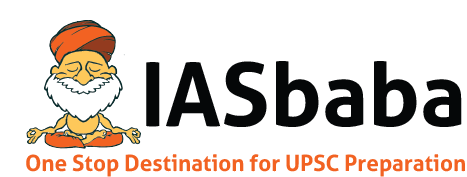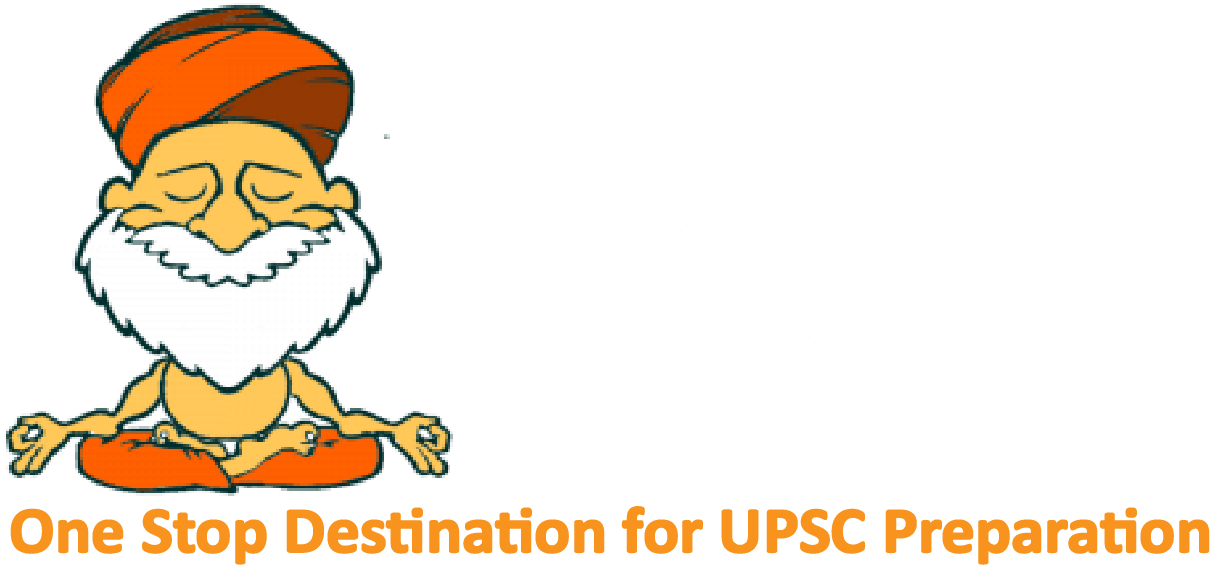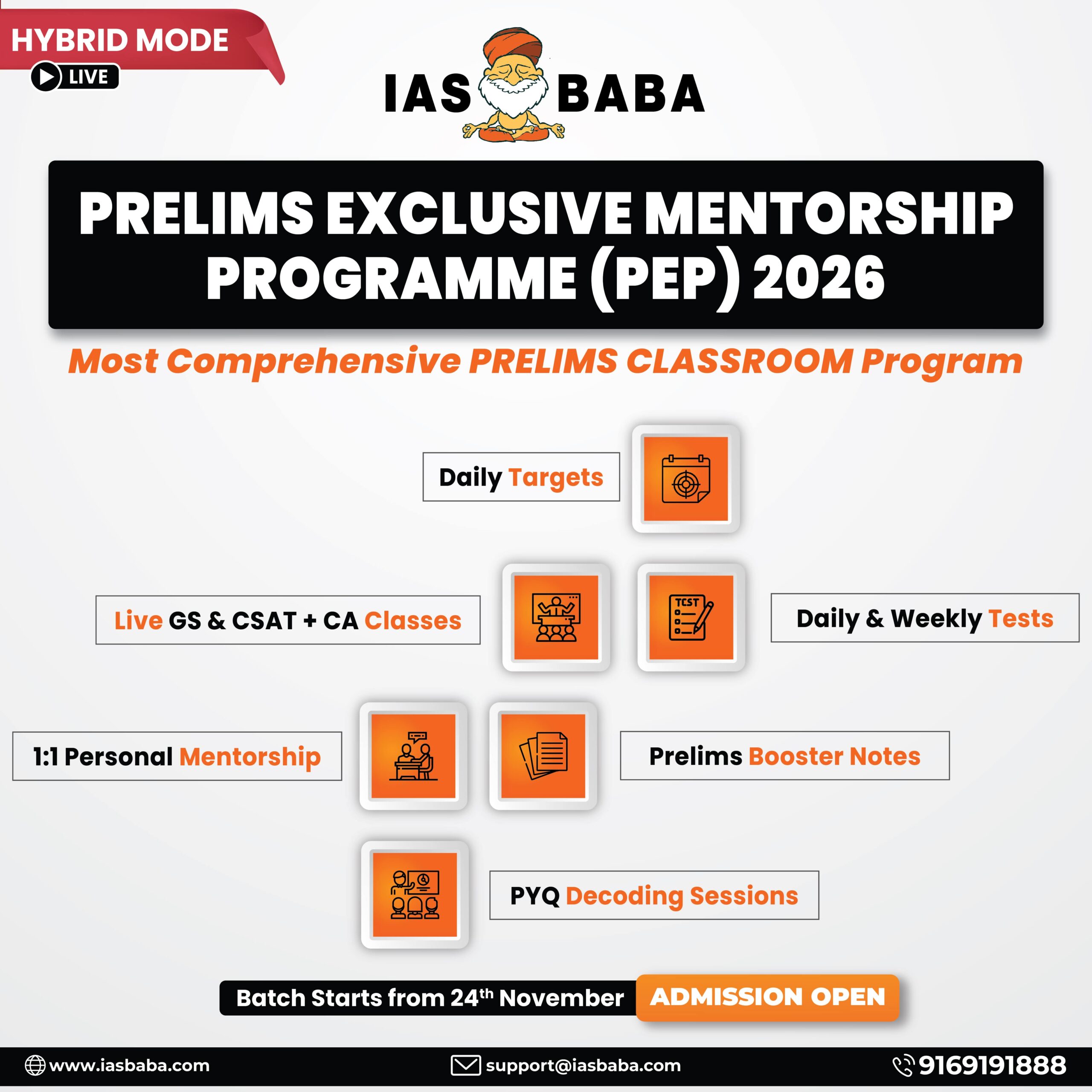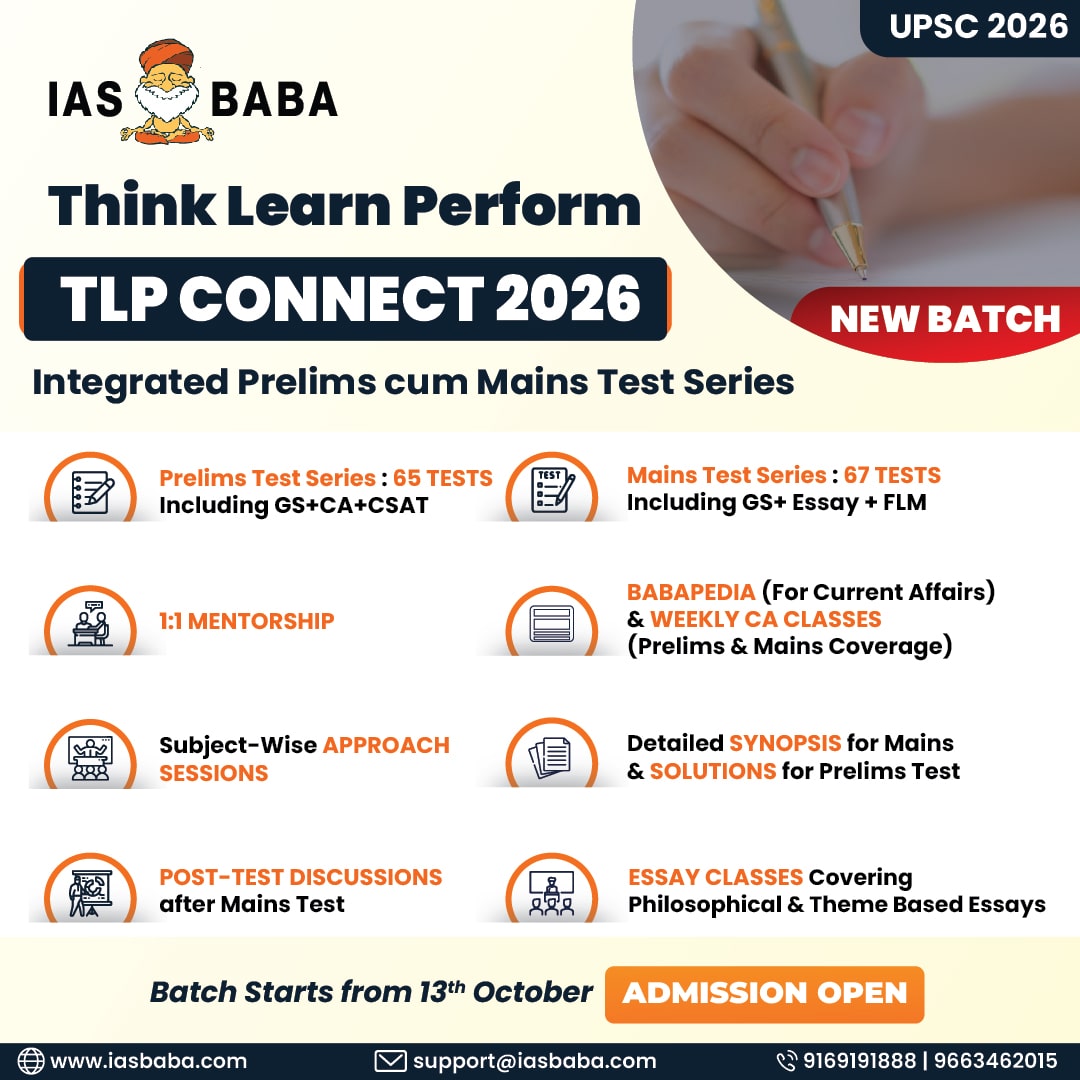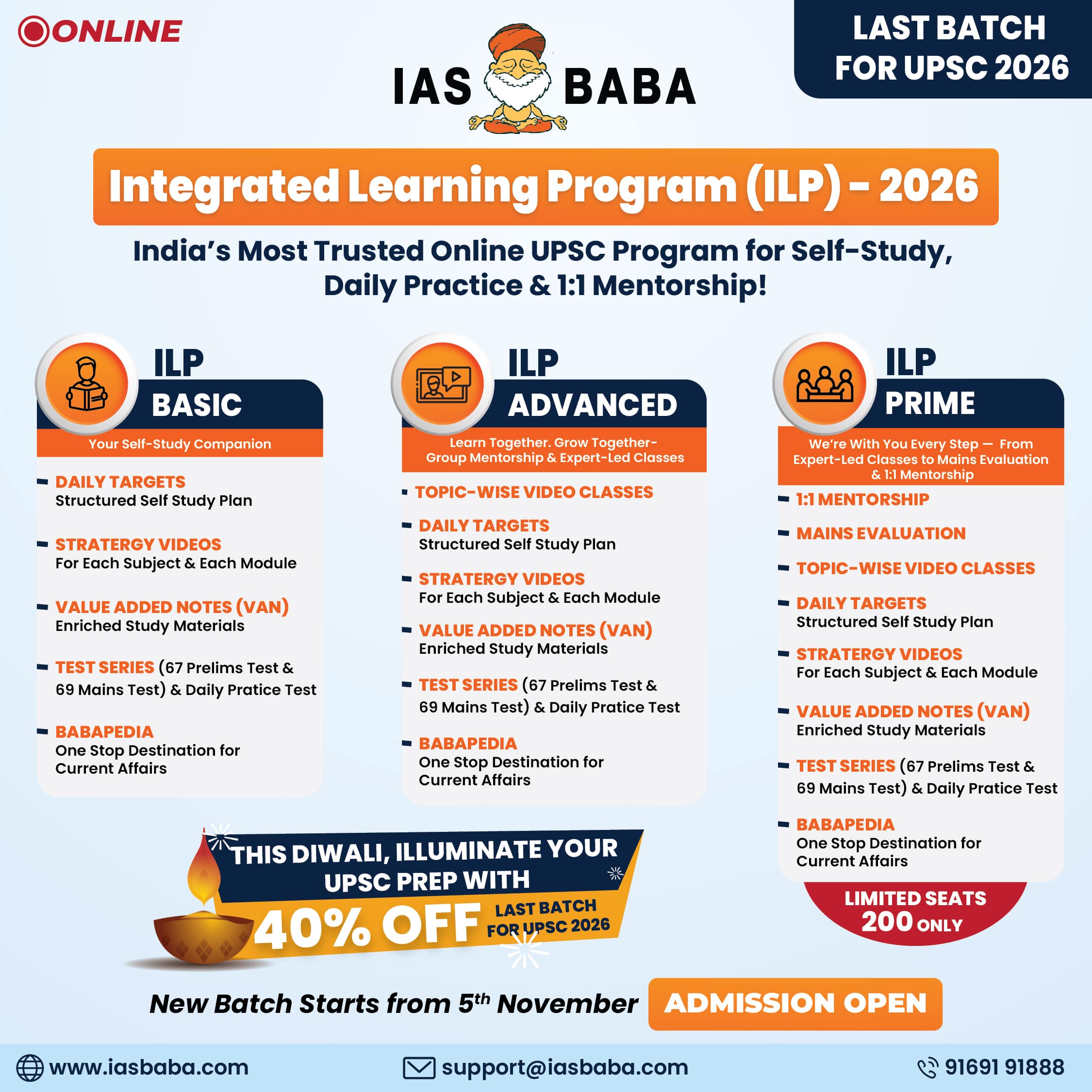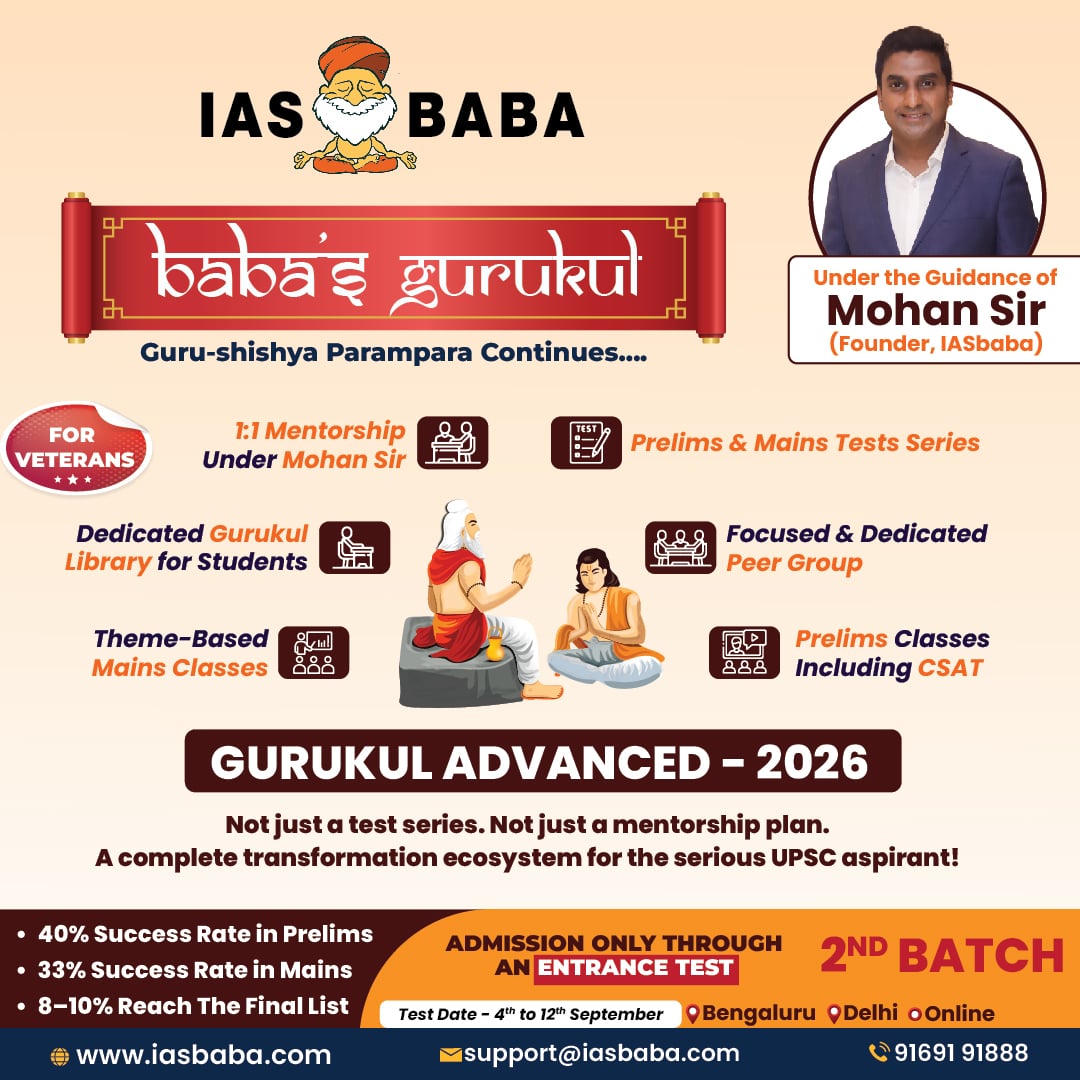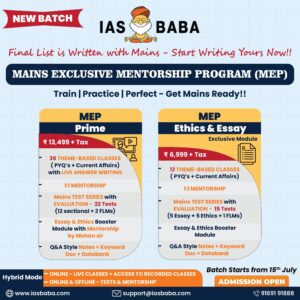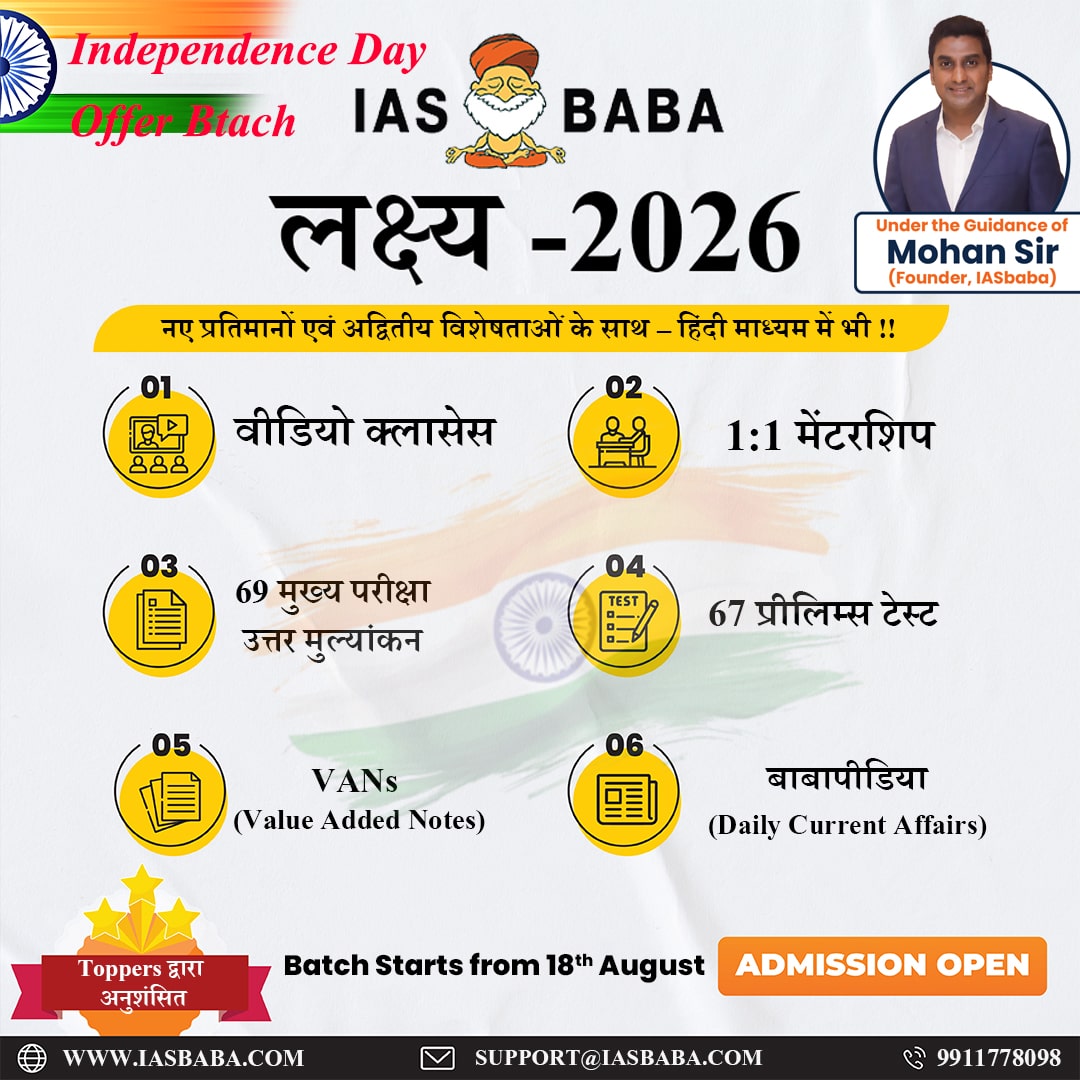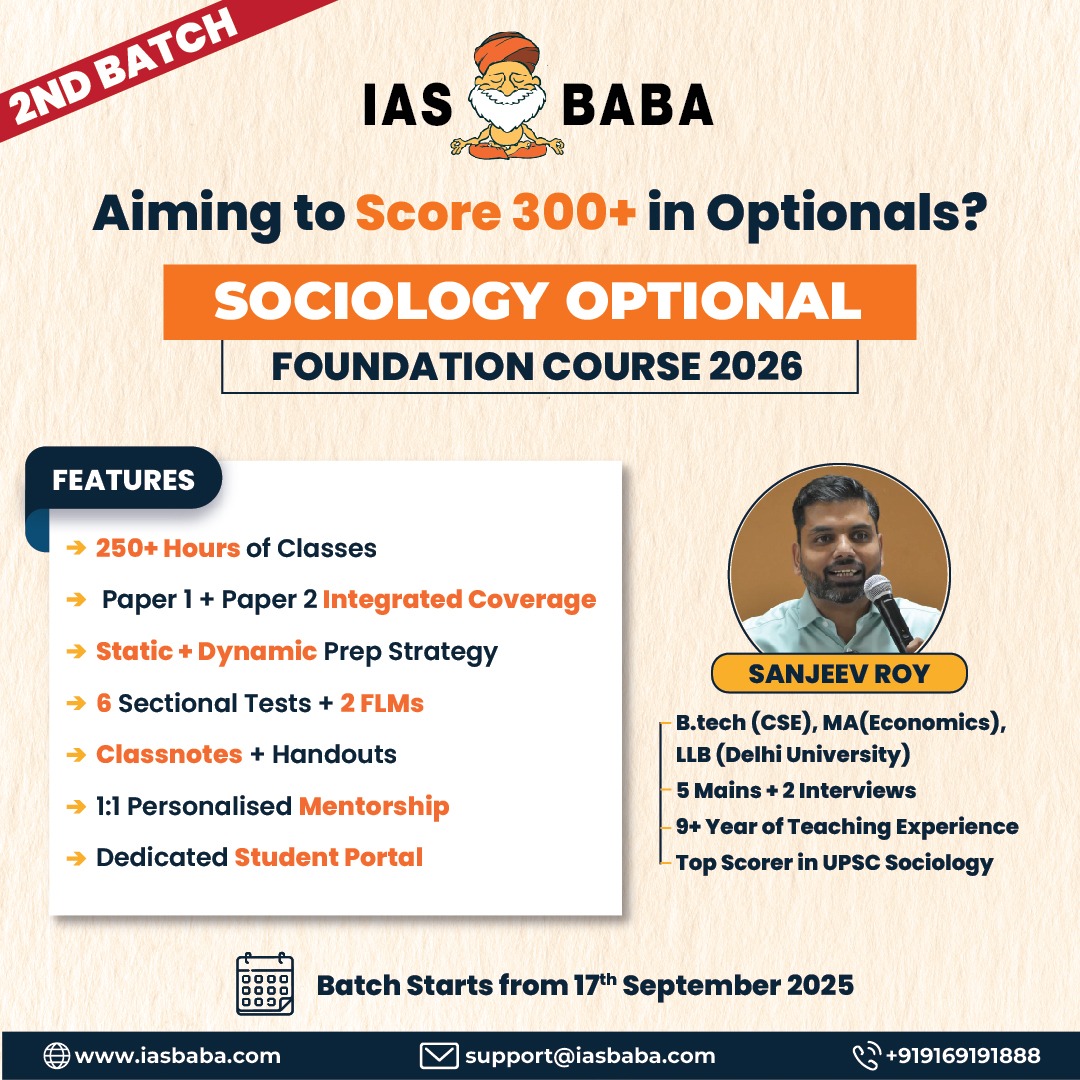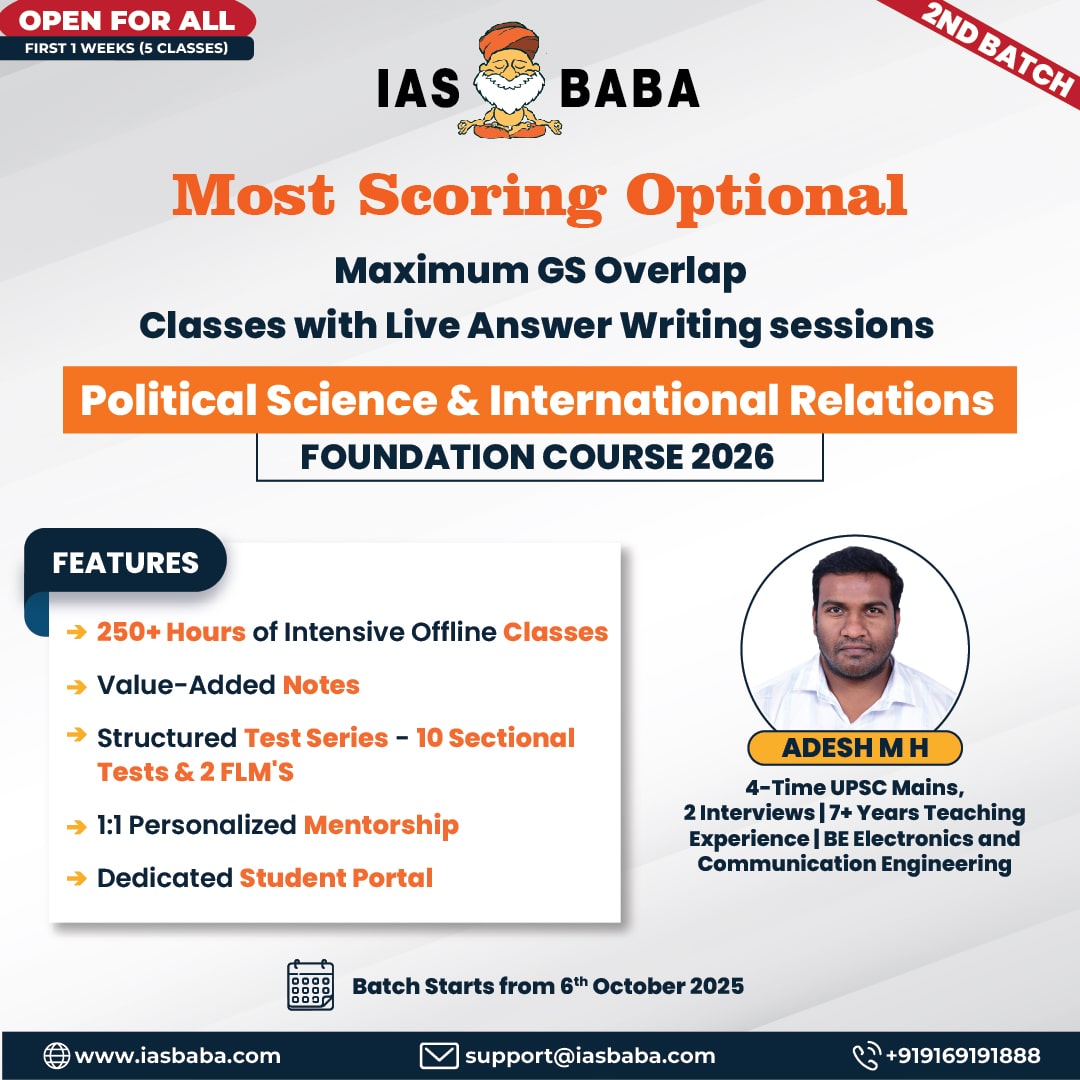IASbaba's Daily Current Affairs Analysis
Archives
(PRELIMS & MAINS Focus)
Category: GOVERNMENT SCHEMES
Context: A week after the Supreme Court reprimanded the government, the Ministry of Road Transport and Highways (MoRTH) notified the cashless treatment scheme for road accident victims during the “golden hour”.
Decoding the context: Going forward, any road accident victim who does not have insurance will be provided free treatment of up to Rs. 1.5 lakh. The rules of the scheme are yet to be notified.
Learning Corner:
- The Cashless Treatment of Road Accident Victims Scheme, 2025, was notified by the Ministry of Road Transport and Highways (MoRTH) on May 5, 2025, under Section 162(2) of the Motor Vehicles Act, 1988.
- The scheme focuses on providing immediate medical care during the golden hour, defined under Section 2(12-A) of the Motor Vehicles Act as the first hour following a traumatic injury, to reduce fatalities from road accidents.
Key Features
- Eligibility: Covers all road accident victims involving motor vehicles on any road, regardless of nationality, age, or socio-economic status, with no paperwork required at the time of treatment.
- The scheme provides cashless treatment up to ₹1.5 lakh per victim for a maximum of seven days from the date of the accident. Funding is through the Motor Vehicle Accident Fund, established under the Central Motor Vehicles (Motor Vehicle Accident Fund) Rules, 2022.
- Implementation: National Health Authority (NHA) is the nodal agency, coordinating with police, hospitals, and State Health Agencies.
- States are required to onboard hospitals, including those under Ayushman Bharat PM-JAY, as designated facilities for providing cashless treatment under the scheme. Non-designated hospitals are permitted to offer only initial stabilization before transferring patients to designated centers.
Legal Push
- Section 162 of the Motor Vehicles Act, effective from April 1, 2022, mandates the formulation of a scheme for cashless treatment during the golden hour. Despite this, implementation was delayed until the Supreme Court intervened.
- Supreme Court Directive: On January 8, 2025, the Court ordered the Centre to frame the scheme by March 14, 2025, criticizing the delay as a violation of Article 21 (Right to Life).
- Hit-and-Run Compensation: The scheme complements the Compensation to Victims of Hit-and-Run Motor Accidents Scheme, 2022, offering ₹2 lakh for fatalities and ₹50,000 for injuries.
Source : Indian Express
Category: INTERNATIONAL
Context: India climbed four spots to the 130th position out of 193 countries in the United Nations Human Development Index (HDI) for 2023, according to the HDR titled ‘A matter of choice: People and possibilities in the age of Artificial Intelligence’.
Decoding the context: The Human Development Report (HDR), published annually by the United Nations Development Programme (UNDP) since 1990, includes several indices to measure various dimensions of human development beyond economic growth
Learning Corner:
Key indices featured in the HDR:
-
- Human Development Index (HDI) – Measures a country’s average achievements in three core dimensions of human development.
- Components:
- Health: Life expectancy at birth.
- Education: Mean years of schooling (for adults aged 25+) and expected years of schooling (for children of school-entry age).
- Standard of Living: Gross National Income (GNI) per capita (adjusted for Purchasing Power Parity, PPP).
- Scale: Ranges from 0 to 1
- Categories: Very High (≥0.800), High (0.700–0.799), Medium (0.550–0.699), Low (<0.550).
- Components:
- Inequality Adjusted Human Development Index (IHDI) – Adjusts the HDI for inequality within a country across its three dimensions (health, education, income).
- Gender Development Index (GDI) – Measures gender disparities in human development achievements by comparing female and male HDI values.
- Components: Same as HDI (life expectancy, education, GNI per capita), calculated separately for females and males.
- Calculation: Ratio of female HDI to male HDI (closer to 1 indicates gender parity).
- Gender Inequality Index (GII) – Measures gender-based disadvantages in three dimensions: 1. Reproductive Health (Maternal mortality ratio and adolescent birth rate), 2. Empowerment (Share of parliamentary seats held by women and secondary education attainment for females vs. males), 3. Labour Market (Female vs. male labor force participation rate)
- Scale: Ranges from 0 (perfect equality) to 1 (complete inequality).
- Multidimensional Poverty Index (MPI) – Measures poverty beyond income by assessing deprivations in multiple dimensions of well-being.
- The MPI evaluates poverty across three dimensions, with 10 indicators:
- Health (2 indicators, 1/3 weight): Nutrition and Child Mortality
- Education (2 indicators, 1/3 weight): Years of Schooling, School Attendance
- Standard of Living (6 indicators, 1/3 weight):
- Cooking Fuel, Sanitation, Drinking Water, Electricity, Housing, Assets
- Poverty Cutoff: A household is multidimensionally poor if deprived in at least 33% of the weighted indicators (a score of 1/3 or more).
- The MPI evaluates poverty across three dimensions, with 10 indicators:
- Human Development Index (HDI) – Measures a country’s average achievements in three core dimensions of human development.
- Planetary Pressures-Adjusted Human Development Index (PHDI) – Adjusts the HDI to account for environmental sustainability, reflecting the impact of human development on the planet.
-
- Components: Adjusts HDI by two planetary pressure indicators:
- Carbon dioxide emissions per capita (production-based).
- Material footprint per capita (resource consumption).
- Components: Adjusts HDI by two planetary pressure indicators:
Source : Hindustan Times
Category: SCIENCE & TECHNOLOGY
Context: India’s first human Space mission “Gaganyaan” programme has entered its final phase, with the first human spaceflight now scheduled for the first quarter of 2027.
Decoding the context: The Human-rated LVM3 vehicle, the Crew Escape System, and the Crew Module and Service Module are all undergoing final stages of testing and integration.
Learning Corner:
- Gaganyaan, India’s first human spaceflight mission, is an ambitious program by the Indian Space Research Organisation (ISRO) to send a crewed spacecraft into Low Earth Orbit (LEO).
- The mission aims to demonstrate India’s human spaceflight capability, making it the fourth nation after the USA, Russia, and China to achieve this feat independently.
Objectives
- Launch a crew of three astronauts to a 400 km orbit for a three-day mission, followed by a safe return via splashdown in the Indian Ocean.
- Conduct microgravity experiments to advance scientific research.
- Develop technologies for future space exploration, including the Bharatiya Antariksh Station (BAS) by 2035 and a crewed lunar mission by 2040.
Key Features
- Spacecraft: The 5.3-tonne Gaganyaan Orbital Module consists of:
- Crew Module (CM): A habitable, truncated cone-shaped module (3.7 m diameter, 7 m height) for three astronauts, equipped with an Environmental Control and Life Support System (ECLSS).
- Service Module (SM): Houses propulsion and power systems, separating before re-entry.
- Launch Vehicle: Human-rated Launch Vehicle Mark 3 (LVM3), modified from GSLV Mk III, with a Crew Escape System (CES) for emergency aborts.
- Vyommitra: A humanoid robot developed as a robotic astronaut, will fly on uncrewed missions to test spacecraft systems, monitor parameters, and interact with ground control to ensure mission safety before human spaceflights.
Source : PIB
Category: ART & CULTURE
Context: The commissioning ceremony of the Vizhinjam International Deepwater Multipurpose Seaport saw Prime Minister Narendra Modi remembering Adi Shankaracharya.
Decoding the context: Modi referred to Adi Shankaracharya’s contribution to awakening the nation’s spiritual consciousness.
Learning Corner:
- Adi Shankaracharya (circa 788–820 CE), born in Kerala, is one of India’s most influential philosophers and theologians.
Philosophical Contributions
- Advaita Vedanta: Shankaracharya is the foremost proponent of Advaita (non-dual) Vedanta, a school of Hindu philosophy emphasizing the oneness of Atman (individual soul) and Brahman (universal consciousness). Key tenets include:
- Brahman Satyam, Jagat Mithya: Brahman is the only reality; the world is an illusion (maya).
- Jivo Brahmaiva Na Parah: The individual soul is not different from Brahman; realization of this unity (jnana) leads to moksha (liberation).
- Key Texts: Authored foundational works like:
- Brahma Sutra Bhashya: Commentary on the Brahma Sutras, systematizing Advaita.
- Upanishad Bhashyas: Commentaries on major Upanishads (e.g., Chandogya, Brihadaranyaka).
- Bhagavad Gita Bhashya: Advaita interpretation of the Gita.
- Philosophical treatises: Vivekachudamani, Upadesasahasri, and Atmabodha.
Institutional Legacy
- Mathas (Monastic Centers): Established four mathas to propagate Advaita Vedanta and unify Hindu traditions: Sringeri (Karnataka), Dwarka (Gujarat), Puri (Odisha), Jyotirmath (Uttarakhand).
- A fifth matha in Kanchi (Tamil Nadu) is also attributed to him, though its historical connection is debated.
- These mathas standardized Vedic learning, preserved texts, and countered heterodox schools like Buddhism and Jainism.
- Through debates and pilgrimages, he revitalized hinduism during a period of decline, challenging Buddhist and Jain philosophies. He integrated diverse practices (Shaivism, Vaishnavism, Shaktism) under the umbrella of Advaita, promoting unity via the Panchayatana Puja (worship of five deities: Shiva, Vishnu, Devi, Surya, Ganesha).
Cultural and Religious Impact
- Unification of Traditions: Promoted the concept of Ekam Sat Vipra Bahudha Vadanti (Truth is one, sages call it by many names), fostering harmony among Hindu sects.
- Pilgrimage Promotion: Revived sacred sites like Badrinath, Kedarnath, and Rameshwaram, strengthening the Char Dham pilgrimage circuit. His travels across India (from Kanyakumari to Kashmir) symbolize cultural unity.
- Legacy in Texts: His teachings influenced later philosophers like Ramanuja (Vishishtadvaita) and Madhva (Dvaita), shaping India’s philosophical discourse.
Source : Economic Times
Category: SCIENCE & TECHNOLOGY
Context: In a first-of-its-kind breakthrough for the Northeast, the Centre for Earth Sciences and Himalayan Studies (CESHS) has successfully drilled the region’s first geothermal production well in Dirang, located in Arunachal Pradesh’s West Kameng district.
Decoding the context: The geothermal-powered drying and storage facilities in Dirang are expected to become operational soon, setting a national precedent for renewable energy deployment in remote and mountainous regions.
Learning Corner:
- Geothermal energy harnesses heat from the Earth’s interior—primarily from radioactive decay and residual heat from planetary formation—to generate power or provide direct heating. It is a renewable, low-carbon energy source. The three main types of geothermal power plants are –
- Dry Steam: Directly uses steam from reservoirs (e.g., The Geysers, USA).
- Flash Steam: High-pressure hot water is depressurized into steam.
- Binary Cycle: Transfers heat from geothermal fluid to a secondary fluid for power generation.
- India’s geothermal potential is estimated at 10,600 MW, largely untapped, with 300+ hot springs across Himalayan and peninsular regions (Geological Survey of India, 2023).
Geothermal Potential in India
- Key Regions:
- Himalayan Belt: High-temperature systems (e.g., Puga Valley, Ladakh; Chumathang, Ladakh; Dirang, Arunachal Pradesh).
- Peninsular India: Medium-temperature systems (e.g., Tattapani, Chhattisgarh; Cambay Basin, Gujarat).
- Hot Springs: Over 300 identified, with temperatures ranging from 35°C to 150°C (e.g., Manikaran, Himachal Pradesh at 96°C).
- Progress:
- Ladakh’s Chumathang project (2023) uses geothermal energy for space heating in hotels, benefiting civilians and military personnel.
Source : Business Today
Practice MCQs
Q1. With reference to geothermal energy in India, consider the following statements:
- Puga Valley and Chumathang in Ladakh are known for high-temperature geothermal resources.
- India has an estimated geothermal energy potential of over 10,000 MW, as per the Geological Survey of India.
- Binary Cycle geothermal plants use steam directly from geothermal reservoirs to drive turbines.
Which of the statements given above is/are correct?
A. 1 and 2 only
B. 2 and 3 only
C. 1 and 3 only
D. 1, 2 and 3
Q2. With reference to Adi Shankaracharya, consider the following statements:
- He is regarded as the main proponent of Dvaita Vedanta.
- He authored commentaries on the Upanishads, Bhagavad Gita, and Brahma Sutras.
- He promoted the Panchayatana Puja system to harmonize sectarian worship within Hinduism.
Which of the statements given above is/are correct?
A. 1 and 2 only
B. 2 and 3 only
C. 1 and 3 only
D. 1, 2 and 3
Q3.In the context of the Gaganyaan mission, Vyommitra is:
(a) An Indian woman astronaut selected for the first human flight
(b) An Earth-observation satellite launched alongside the mission
(c) A humanoid robot designed for uncrewed test flights
(d) The name of the Indian lunar rover
Comment the answers to the above questions in the comment section below!!
ANSWERS FOR ’ Today’s – Daily Practice MCQs’ will be updated along with tomorrow’s Daily Current Affairs
ANSWERS FOR 6 May – Daily Practice MCQs
Q.1) – a
Q.2) – b
Q.3) – d
